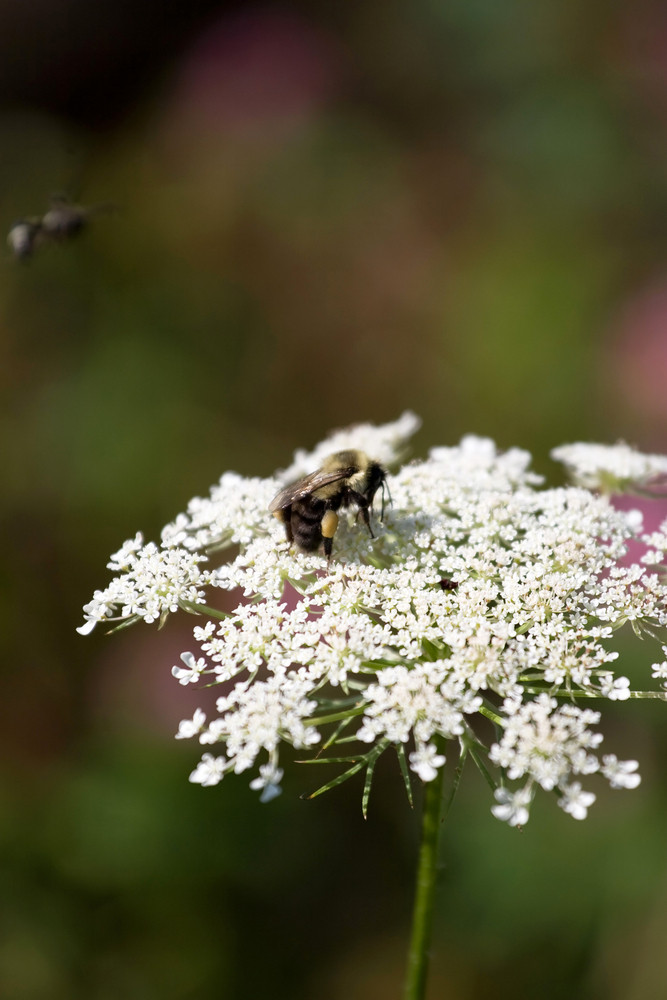Dog friendly plants in Australia (for noobs like us!)
For over 500 years scientists have researched the effects of plants on our health and wellbeing, and guess what – they’re healthy for our dogs too!
If your dog spends a lot of time indoors, having a few plants around can improve their health!
Did you know just one plant can improve the air in your home by 25%?
5 plants will give you 75% cleaner air!
And for max benefit to both your and your dog – 10 plants! 🌱

If you’re looking to buy dog friendly plants you’ve come to the right place – I’ll tell you the best plants to buy in Australia!
Oh, and you’ll find all these dog friendly plants at Bunnings or your local garden centre!
The best dog friendly plants in Australia:
I’ll go into the science and nitty gritty in due course, but let’s get straight to it – these are the best dog friendly plants in Australia.
If you want to know what they look like in a real-life setting, then the image at the top shows all these plants in one room. Looks fab, doesn’t it?
️️🖨️ Download and print this list of dog friendly plants (PDF)
Rosemary
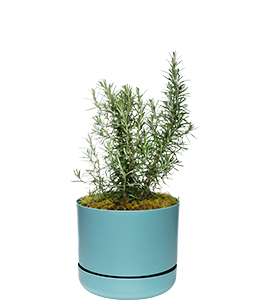
I’m sure you’re familiar with Rosemary already. It happens to be one of the best dog friendly herbs.
Not only does rosemary have a beautiful aroma, it provides numerous health benefits for our dogs. Pluck off a sprig every now and then and you can add it to your dog’s food, or use it in a home-made dog shampoo.
Rosemary contains antioxidants, which when added to your dog’s diet can help ward off caner and heart disease. It can also aid digestive health with it’s antimicrobial properties.
Just keep it in moderation, as too much of anything can be problematic.
Rosemary is often used to repel fleas and ticks, which is why you’ll often find it in natural dog shampoos. These are easy to make at home, especially when you have your own rosemary!
Rosemary loves sun, so if you’re growing it indoors it’s best to be near a window. Outside it can grow into a great hedge!
Nephrolepis Emerald Queen
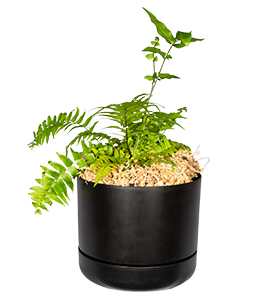
Nephrolepis Emerald Queen is a popular indoor fern because it’s super easy to take care of.
So even if you’re new to plants, you really can’t go wrong with this houseplant.
You’ll find it comes under numerous names, such as sword fern, boston fern, or brake fern. The sword reference is from the sword-like leaves.
This dog friendly fern can grow up to 2ft high, even in lowish light and humidity, so you’ll find it still grows well in gloomier corners – so brighten those corners up!
Calathea Zebrina
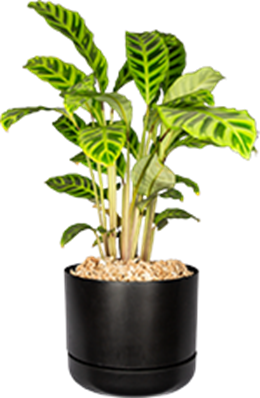
Sometimes known as the “zebra plant”, the Calathea Zebrina makes for a great houseplant which is non-toxic to dogs.
The leaves are funky – by far the funkiest on this list. You can see from the picture above, with a very striking “zebra” pattern created by the lush green colour combination.
Calathea Zebrina is actually native to Brazil, which means it prefers warmer, more humid conditions.
As a houseplant, even in drier climates, as long as you keep it out of direct sunlight and mist the leaves regularly it should do just fine.
One of the great things about this plant is it’s not picky about soil – just make sure it’s well-draining.
Calathea Zebrina is a great addition to any home, especially your dog’s home!
Calathea Rufibarba
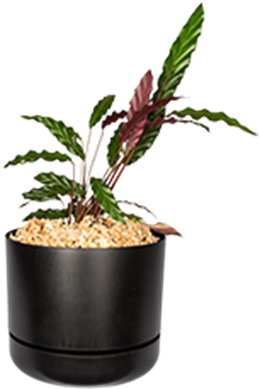
Calathea Rufibarba is one of the few plants that are known to be toxic to cats but harmless to dogs, so keep that in mind if you have a kitty friend as well.
Otherwise this plant makes a beautiful, low-maintenance houseplant which shares some of the striking foliage as the Calathea Zebrina above.
With this variety you have furry green and purple leaves and stems to add a little colour to your home. It’s a popular pick for plant enthusiasts for good reason.
In fact, many pet owners find their dogs enjoy nibbling on this plant (especially the leaves). So make sure you keep an eye on your pup just in case he decides to take a bite!
Nephrolepis Macho
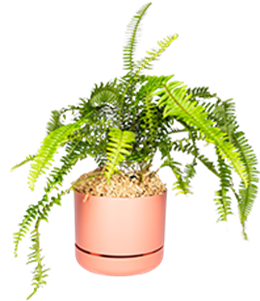
Nephrolepis Macho is a robust fern native to Australia and tolerates a wide range of conditions. This makes it ideal for busy dog owners like us!
It’s also relatively low-maintenance, so you won’t have to spend hours keeping it alive.
Nephrolepis Macho makes a great addition to any home thanks to it’s striking fronds, which being a lighter green offer a lovely contrast to other plants on this list.
This fern can tolerate both full sun and shade, so can work well in a variety of locations indoors or outdoors.
It’s also relatively drought tolerant, so you won’t need to panic if you forget to water it for a few days.
Golden Cane Palm
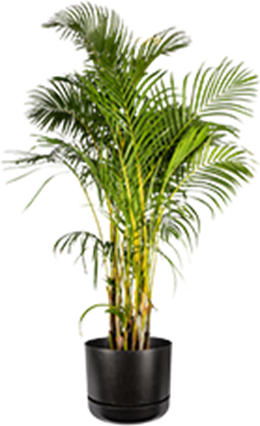
The Golden Cane Palm is a great choice for dog-owners seeking a low-maintenance, robust plant that will thrive in almost any condition.
It’s a palm native to Australia which means it’s tough and can withstand tricky conditions. This is the reason you see these palms used for ornamental purposes in public spaces and homes.
The Golden Cane Palm is very easy care, so you only need to water or prune them occasionally to keep them looking good.
If you live in a coastal area then they’re also very tolerant of salt spray and heat.
Best of all, this beautiful plant is safe for dogs (other than slightly sharp leaves) – so you can enjoy its gorgeous foliage without having to worry.
Maidenhair Fern
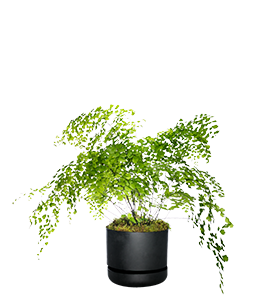
The Maidenhair Fern is another easy win for busy dog owners who don’t have much of a clue about houseplants.
Not only is it safe for our dogs, all you need to do is make sure it’s kept out of direct sunlight and the soil is kept moist.
It’s not surprising the Maidenhair Fern is a popular choice, and the glossy, lacy leaves can add a touch of elegance to your home!
Maranta Prayer Plant
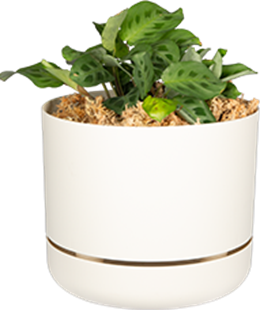
The Maranta Prayer Plant makes for a great decorative choice thanks to the beautiful colouring of the leaves.
It’s one of the few plants in Australia which are safe for our dog’s to eat – not that we’d let them!
Being non-toxic you won’t need to worry if your nosy pooch decides to lick or chew on it.
The Maranta Prayer Plant is great for us inexperienced plant-owners as it doesn’t require much water.
So if you’re like me you won’t need to worry too much if you forget to water it for a while.
The Maranta Prayer Plant thrives in lower light conditions, so whether you need to brighten up a dark corner or live in a dark apartment, this is a great choice for you and your dog.
Variegated Spider Plant
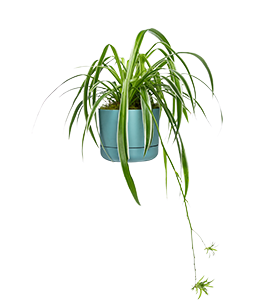
Last but not least – one of my personal favourites is the Variegated Spider Plant.
This beauty is safe for both dogs and cats, and can really add some pizazz to your home.
It’s a beautiful, easy-care houseplant which does well in bright, indirect light, and it’s moderately drought tolerant as well (you’ve probably realised by now I favour plants which are easy to keep alive!)
The variegated spider plant gets its name from the small, white flowers which grow along the slender stalks.
These stalks can grow up to 24 inches in length, and work well if you have the plant up high or on a shelf.
The leaves are lance-shaped and variegated with green and white stripes.
Great choice, don’t you think?
Houseplant benefits for you and your dog
It’s 2022 and we’ve all heard about carbon. It’s been rammed down our throats a little, hasn’t it?
Houseplants can help!
Not only do houseplants improve the quality of air in our homes, they also help our wellbeing.
Our dogs can benefit from cleaner air in our homes, and it’s fair to guess a few plants can make them feel more relaxed in a more native environment!
Let’s take a look at the two key benefits of houseplants:
Cleaner air!
To get all scientific, this is about VOCs (Volatile Organic Compounds). Our homes are full of them.
Many household products such as paints, furniture finishes, and cleaning products often contain what are known as organic chemicals. These volatile compounds (or VOCs) can easily become vapours or gasses which contaminate the air in our homes.
Research suggests concentrations of VOCs in our homes can be up to 10 times higher than outdoors!
Inhaling VOCs has been linked to health problems for us and our pets such as asthma, allergies and headaches (do dogs get headaches?)
While the vast majority of VOCs do not pose any threat when inhaled at low concentrations, some can be harmful if concentration levels are high or they remain in our system for long periods of time.
Some plants can actually create VOCs, but most help to suck in nasty VOCs and convert them to oxygen so you can breathe more easily.
Better wellbeing and mental health!
The findings from RMIT have shown houseplants improve our direct mental health, such as mood and concentration.
There has also been evidence plants have more indirect benefits, such as improving our productivity and boosting positive social behaviour.
Most of us are home more these days, so the benefits of plants for both us and our dogs is even more so.
From the RMIT research we can see 1 plant provides a little more mental wellbeing, 5 plants can provide 60% more mental wellbeing, and 10 plants will give us the maximum benefits (based on a medium-sized room).
A variety of plants is also a good thing, as different plants affect us in different ways. It’s similar to feeding our dogs – a variety is always more beneficial.
Our yards and courtyards can also have limited air quality as VOCs escape from our home or invade from other sources, so a good mix of plants in outdoor areas is also beneficial.
It’s important to get the balance right and not overdo it with houseplants, so let’s take a look at how many houseplants you should have in your home, per room size.
How many houseplants should you have?
The best way we can work out how many houseplants we need is considering two factors – (1) the size of the room, and (2) the size of the plants.
To make this easy, I’ll split it into small room, medium room, and large room.
The size of plants is a factor, so for the diagrams below we’ll count 1 plant = 1 medium plant (up to 30cm in height).
For small and large plants, you can use the following rules of thumb:
- A small plant is 1/3 of a medium plant (or 3 small plants = 1 medium plant).
- A large plant is 1.5 times a medium plant (or 2 large plants = 3 medium plants).
Small rooms
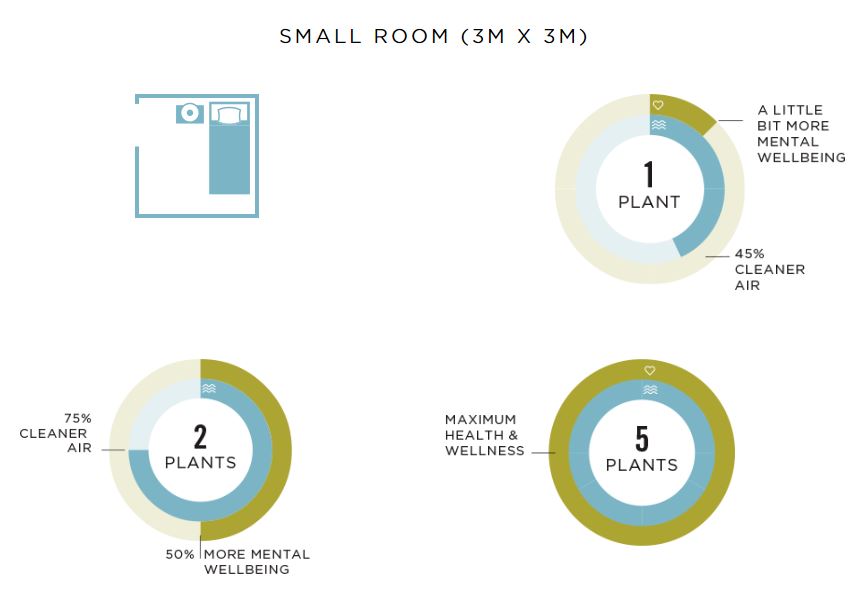
Medium rooms
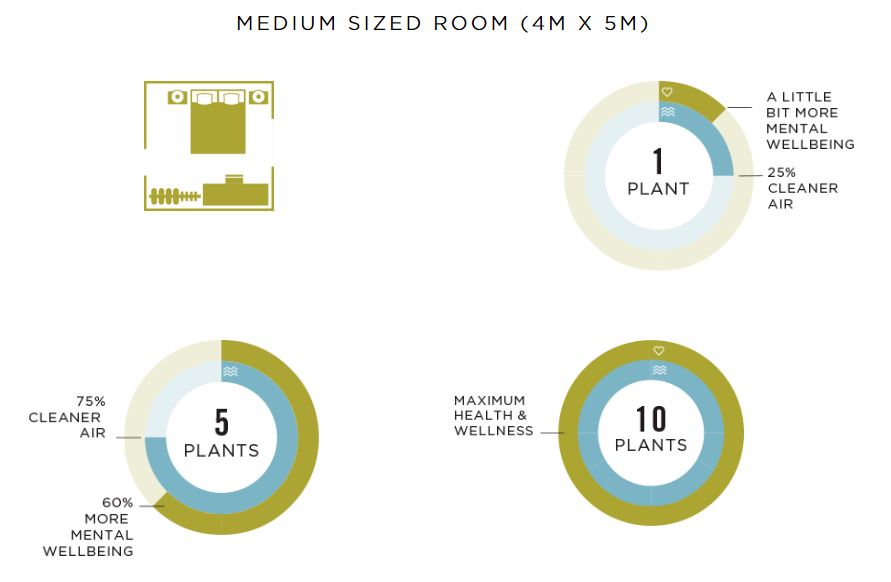
Large rooms
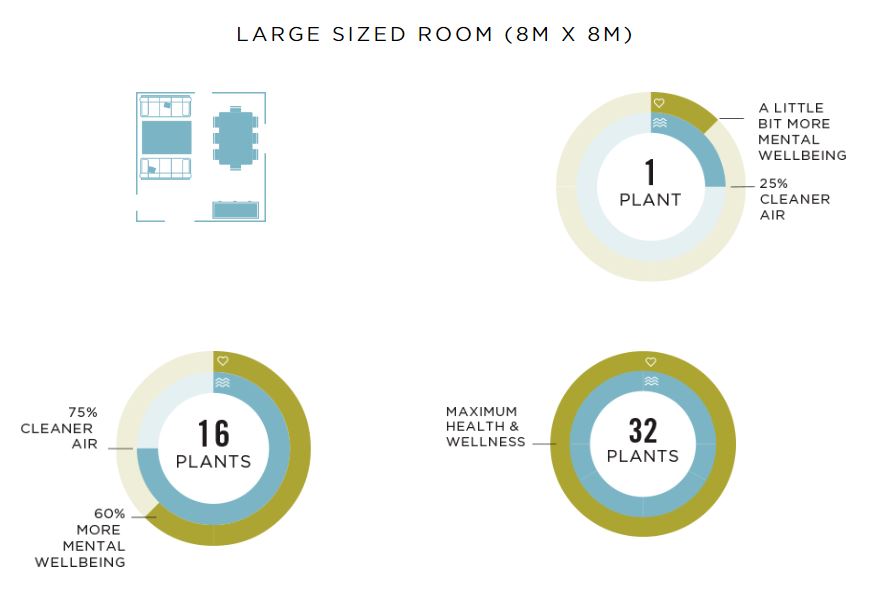
How do I decide which houseplants to buy?
The science as determined by RMIT helps us keep the process of choosing plants simple, but the reality is some plants are far better at improving air quality than others.
Choosing a variety of plants from the list of dog friendly plants in Australia above is by far the easiest option. Then you don’t need to worry about complex calculations!
However, if you want more information on individual plants, then the experts at Bunnings or your local nursery should offer you some great information.
Or, if you want to rely on information from the big boys and girls, check out NASA’s Clean Air Study.
A note about the RMIT research
As the guide above is based largely on the research from RMIT, I’ll cover it in a nutshell here (although I expect you to be out buying plants by now!)
The study collated 101 research articles in a bid to create a single easy to understand index.
In order to do this, they assessed each plant’s ability to absorb airborne pollutants. These include VOCs, carbon monoxide, and other particle matter like ash and dust.
Part of the research also focused on the benefits of plants on mental health and wellbeing, including improving our mood and concentration.
Last but not least, the findings were pumped through the peer-review process to be assessed by experts in the field.
Whatever dog friendly plants in Australia you decide to buy, I’m sure they’ll offer you and your dog better quality air, and a more Zen environment for health and wellbeing.
Let me know in the comments what you choose to buy, and better yet – post photos!



